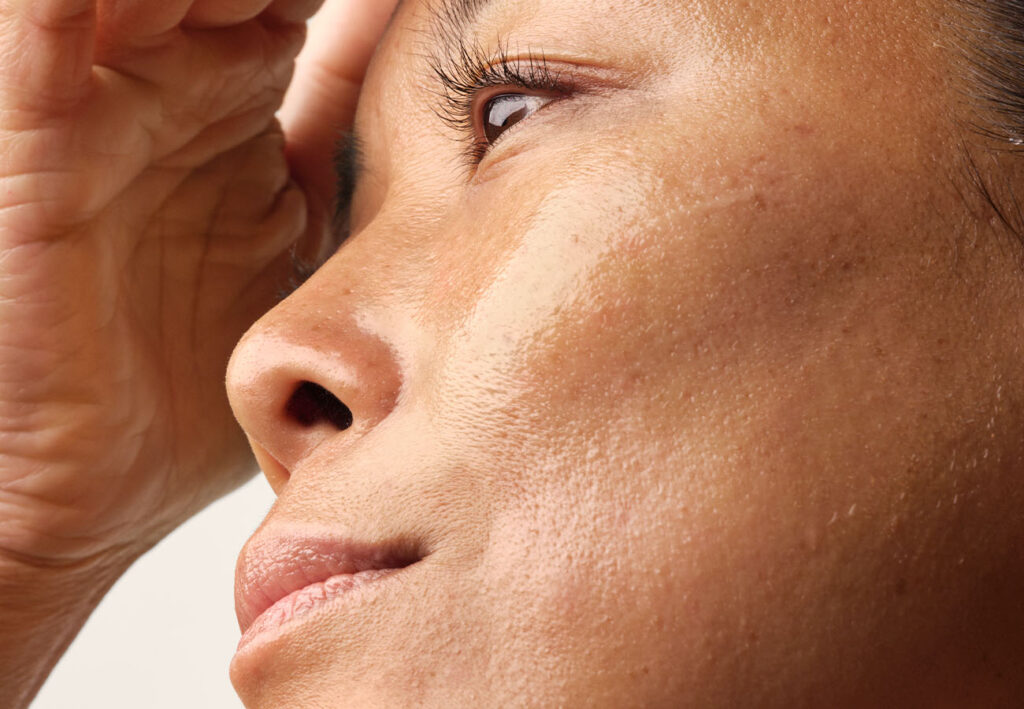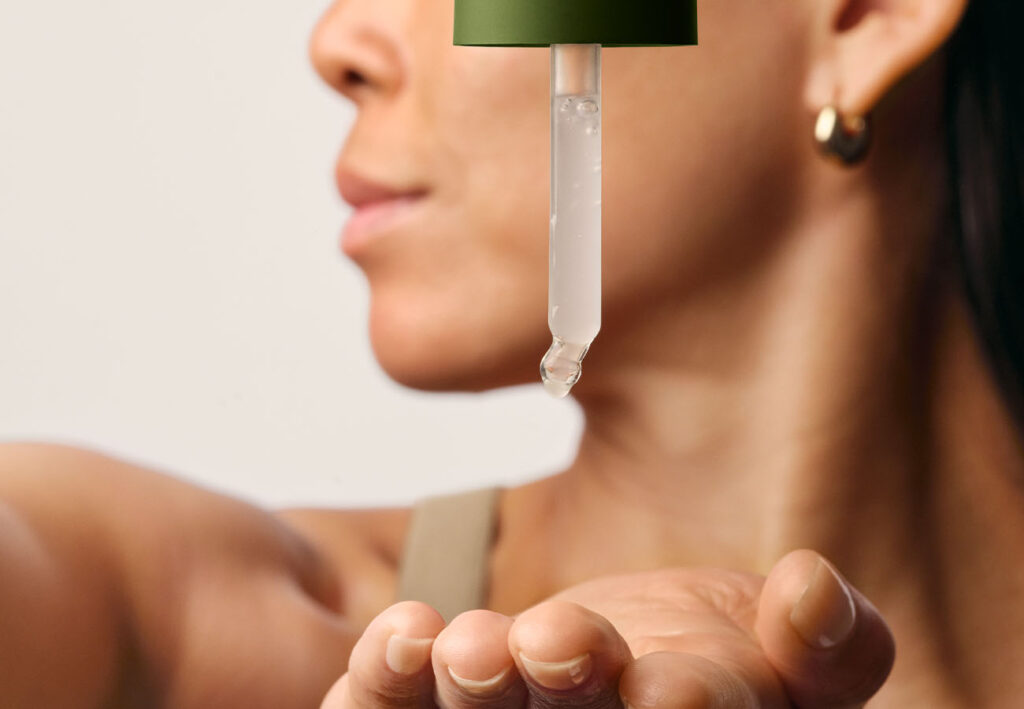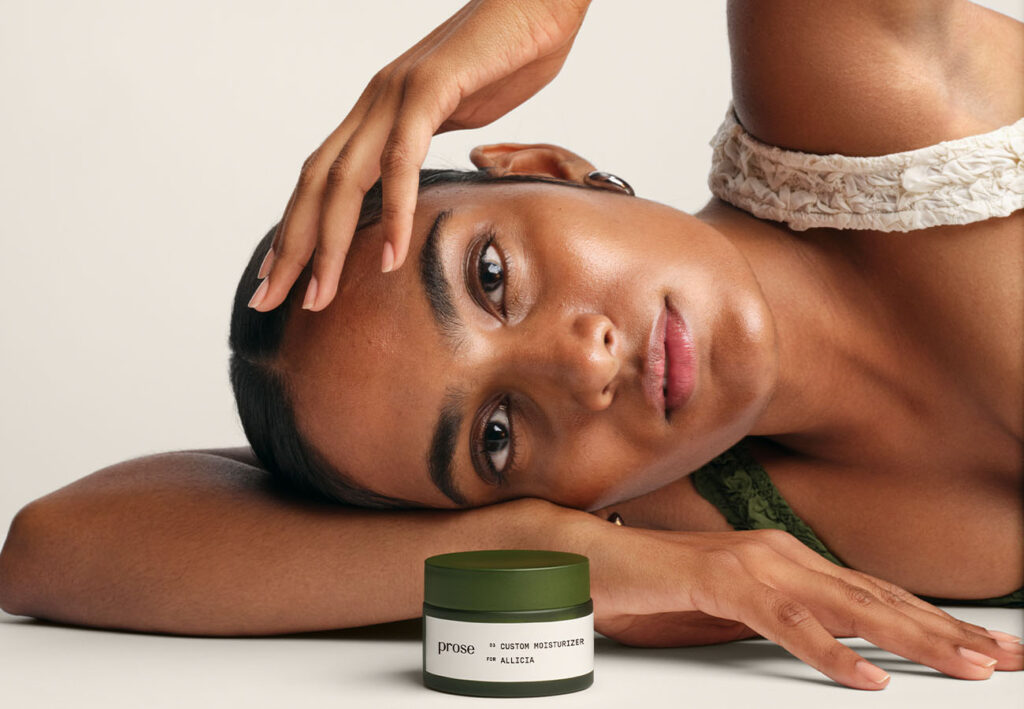Common Types of Skin Textures
No one’s skin is the same and the majority of people experience roughness, bumps, dryness, or red patches from time to time. This is totally normal. Although you can have textured skin anywhere on the body, it commonly affects the face. Some types of skin texture are:
- Rough: There are several factors that can cause skin to look or feel rough, including a build up of dead skin cells, dehydration, dry areas of skin, and acne scarring. Lots of people experience rough or dry patches on the forehead, nose, and chin in particular.
- Bumpy: A bumpy skin texture or redness can be a common symptom of sensitive skin. Acne scars can also make skin look bumpy.
- Enlarged pores: Bumpy skin with visible pores may be a sign that you have an oily skin type. Excess oil and loss of skin elasticity can make the pores look larger on certain parts of your face.
- Dry: If you have a dry skin type, your skin texture might be scaly or flaky, or feel tight. If you are particularly dehydrated, this can make your skin tone dull.
- Wrinkled: Wrinkled skin is often caused by sun damage. Wearing SPF daily can reduce this effect.
Textured skin can be caused by aging, genetics, and certain skin conditions, but lifestyle factors (like diet, smoking, and dehydration), and environmental factors (like the weather and pollution), can also contribute.
Identifying Your Skin Texture
If you already have a skincare routine, chances are you’ll be familiar with what products work for your skin type, from oily and dry to combination skin type. But if you need help identifying your skin texture, read on.
The easiest way to identify your skin texture is to examine it closely in a mirror. Run a finger gently over your face – are there any bumps or pits? Does it feel rough to the touch, or smooth? Can you see any lines or wrinkles? Can you clearly see your pores? If you have oily skin, you are more likely to notice visible pores, acne, or acne scars. If you have dry skin, rough patches, wrinkles, and lines are more common.
Skin changes over time. This might include more wrinkles or fine lines, drier skin, or more blemishes or spots. This is because as we get older, the collagen levels in our skin decline and it loses its firmness and elasticity. Although changes in your skin’s tone and texture are completely normal, there are ways to manage and improve your skin’s texture.
Managing and Improving Skin Texture
Whatever your skin texture and type, there will be a skincare routine for you. These are some of the best products for improving your skin texture:
- Cleansers and toners: If you have textured skin due to acne or clogged pores, cleansers and toners are useful additions to your bathroom cabinet. Both products remove dirt, oil, and makeup from your skin, leaving it sparkling clean.
- Exfoliants: A chemical exfoliant can remove dead skin cells and unclog pores to improve your skin’s overall texture. Look for products that contain glycolic acid, lactic acid, or salicylic acid. Glycolic and lactic acid are milder, ideal for dry or sensitive skin, while salicylic acid is great for oily or acne-prone skin. You could also use a face mask containing these ingredients.
- Retinols and retinoids: Retinols or retinoids are derivatives of Vitamin A and can work wonders for textured skin caused by acne. Not only do they boost collagen production to reduce the appearance of fine lines, but they unclog pores, reducing breakouts. Retinoids are quite strong, so always patch test a product before you use it and then introduce it gradually into your routine. Be aware that retinoids can also make your skin more sensitive to the sun.
- Vitamin C: A powerful antioxidant, Vitamin C brightens the skin, reduces dark spots, and firms the skin, all of which can help improve texture. Use in serum form or an enriched moisturizer and pair with a good SPF, as Vitamin C can make your skin more sensitive to sunlight.
- Moisturizer: Moisturizers hydrate the skin and repair the epidermis, or the skin barrier. Good moisturizers for textured skin contain hyaluronic acid or ceramides as these are excellent ingredients for increasing the skin’s water content.
- Sunscreen: The final step in any skincare routine should be sun cream. Exposure to sunlight can lead to fine lines and wrinkles and loss of elasticity. Protecting your skin from the sun can have multiple benefits for its texture. Wear a suncream with an SPF of at least 30, even on cloudy days.
Although it can be tempting to exfoliate textured skin, try to limit exfoliating to two or three times a week. Repeated exfoliating, or using harsh scrubs and products, can actually exacerbate any skin issues, especially for dry and sensitive skin.
Custom Skincare Solutions for Every Skin Type
If you’re looking for advice on skin textures, Prose is here to help. We offer personalized skincare products based on your skin type, lifestyle, and environmental factors. All you have to do is answer a series of questions and we’ll do the rest!
Benefits of Customization
Prose will work with you to develop a comprehensive skincare routine that is easy to fit into your daily routine. It will also take any changes in your lifestyle, skin condition, and environmental factors into consideration. Each Prose product uses tailored ingredients to target your skin’s unique needs, helping to enhance its texture and improve hydration. To take your personal skin assessment, head to the Prose skincare page. Your journey to better skin is just moments away.
We are all about celebrating your beautiful skin just the way it is. However, following a consistent skincare routine, drinking plenty of water, and eating a varied, healthy diet all promote healthy, radiant skin.





